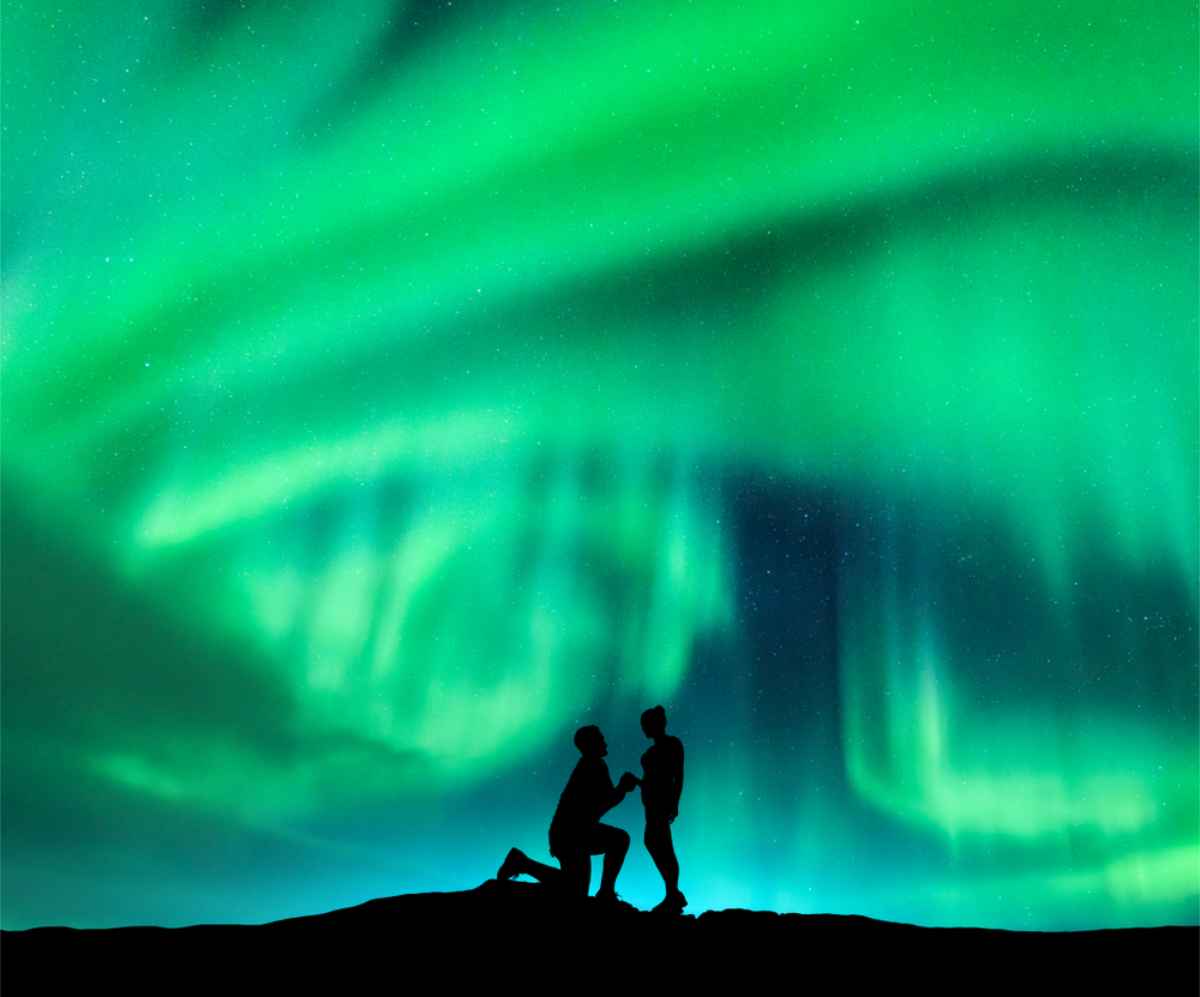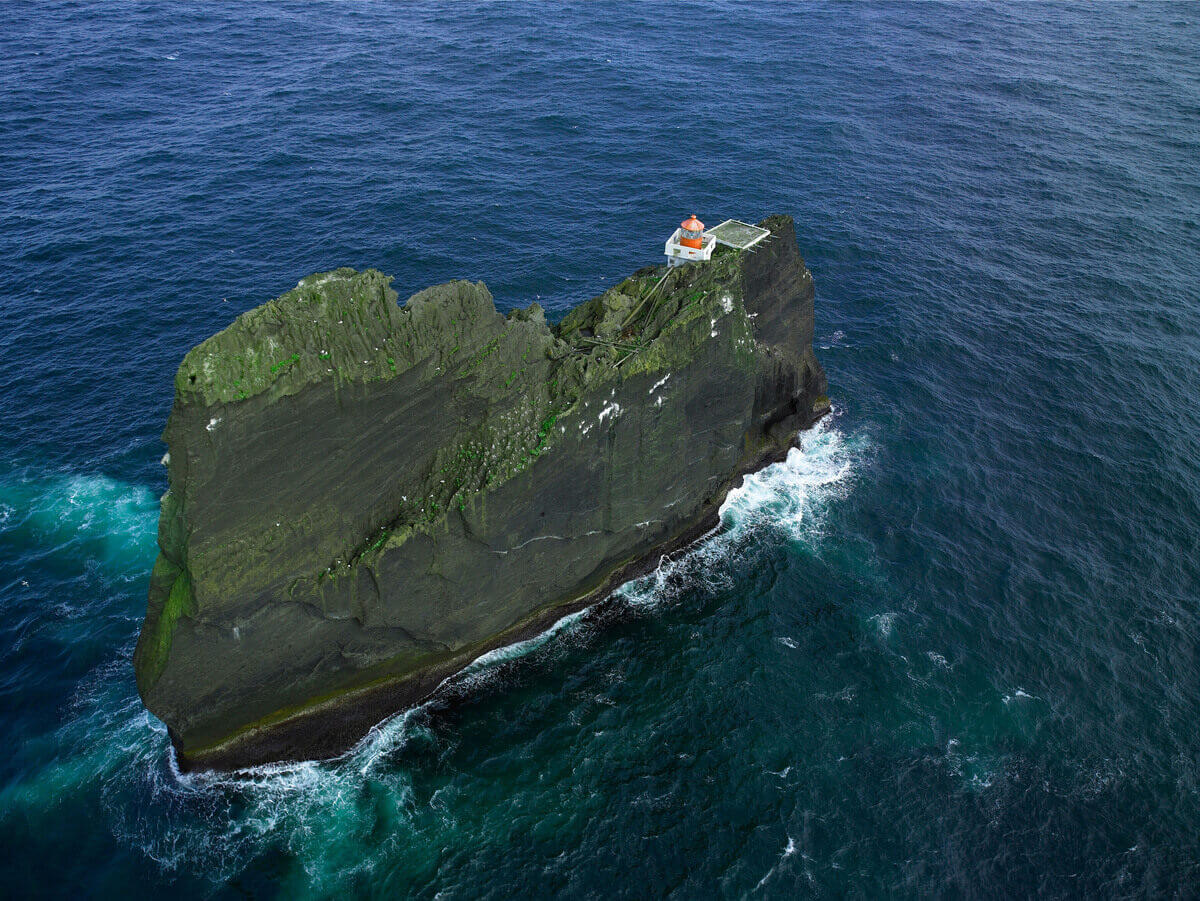With over 10,000 waterfalls in Iceland, it can be hard to discern which ones to prioritize when it comes to your trip itinerary. That being said, without input from a local, you may only check off some of our most famous waterfalls, such as Dettifoss and Seljalandsfoss, and completely miss out on our hidden gems, such as Hrafnabjargafoss.
This article serves to reveal everything there is to know about this North Icelandic gem and put it back on the map (figuratively speaking) so you can add it to your trip itinerary and not miss out on one of the not-so-known must-visit waterfalls here on the island.
Where to Find Hrafnabjargafoss in Iceland
Hrafnabjargafoss Waterfall can be found tumbling over the cliff edge of the 9000-year-old Badardalshraun Lava Field (which stretches all the way to Pingey Island and was formed during a major eruption in the area, by the way). Hrafnabjargafoss lies in Svartarkot, which is part of the Highlands in the North-eastern part of Iceland.
The biggest town close by is Akureyri (considered the capital city of the north) roughly a 1.5-hour drive away from Hrafnabjargafoss. The waterfall is also a convenient short detour off our famous Diamond Circle road trip route.
Hrafnabjargafoss Waterfall: A Quick Introduction
Hrafnabjargafoss is actually part of a triplet of waterfalls here in Iceland. It just so happens that, like many brothers and sisters of celebrities, it just got overshadowed by its more famous siblings. Hrafnabjargafoss Waterfall’s origin story starts at the largest glacier in all of Europe; Vatnajökull.
Glacial meltwater combined with spring water resulted in Skjalfandafljot (Iceland’s 4th-longest river). This river runs for about 180 kilometers, and it’s in this river that you’ll find Hrafnabjargafoss and its more famous siblings, Godafoss and Aldeyjarfoss. Although not one of our tallest or wides waterfalls in Iceland, as it stands just 5 meters tall and spans only 17 meters across in a horseshoe shape, it still makes for an impressive sight.
Hrafnabjargafoss might technically be one waterfall, but when standing beside it, it feels more like a myriad of smaller waterfalls tumbling down from the jagged and rocky lava field. In fact, a giant boulder nearly splits the waterfall entirely in half at some point. That’s why the eastern side of the waterfall resembles a myriad of smaller waterfalls cascading down the cliffs, while the western side resembles what we usually envision a waterfall to be: a powerful mass of water rushing over a cliff edge.

Getting to Hrafnabjargafoss Waterfall in Iceland
You won’t find any guided tours solely dedicated to Hrafnabjargafoss, so if that’s what you’re looking for, we suggest you request a customized private tour from one of our local tour operators or guides. You will, however, find other tour options that include Hrafnabjargafoss.
These usually range from combination day tours, where one visits multiple local attractions, and multi-day tours, exploring various parts and attractions of the island. In our experience (and which is our own personal preference), most opt to drive to Hrafnabjargafoss themselves. Whether as a day outing or as part of a Diamond Circle road trip, you’re likely to kickstart your Hrafnabjargafoss adventure from Akureyri.
The directions to Hrafnabjargafoss are simple, but you’ll need to be aware of the fact that you’ll need to drive one of the infamous F-roads of Iceland to get there. These roads are unpaved and can be challenging, depending on the time of year and weather conditions. You are also legally required to drive the F-roads with a 4x4 vehicle. That being said, the directions to Hrafnabjargafoss from Akureyri are as follows:
- Get onto the Ring Road (Route 1) and head south towards Godafoss.
- Take Route 842 and continue till you turn off onto F26.
- The F26 will take you straight to Hrafnabjargafoss.
How Much Does it Cost to Visit Hrafnabjargafoss Waterfall?
Visiting Hrafnabjargafoss Waterfall is completely free. Not only won’t you be charged an entrance fee, but it’s also one of the few attractions where you still don’t pay a parking fee.
How Much Time to Allocate Toward Your Hrafnabjargafoss Visit
We recommend allocating between an hour and 1.5 hours to your Hrafnabjargafoss visit. That will give you more than enough time to admire the waterfall from all angles and take a few impressive snapshots.
When is the Best Time to Visit Hrafnabjargafoss Waterfall?
Because of Hrafnabjargafoss’s location, there are a few things to keep in mind when planning your trip itinerary and visit to the waterfall:
- Reaching Hrafnabjargafoss will require driving on an F-road. The F-roads in Iceland are subject to annual closure over the colder months of the year (due to the weather making road conditions on these unpaved roads too tricky and even completely inaccessible). The F-roads are usually open between late June and late August, even though some roads may have slight variations on their opening or closing times (but only by a couple of weeks or so).
- If you’ve got your heart set on doing the Diamond Circle or a few other attractions around Hrafnabjargafoss, we’d also recommend that you stick to visiting during the warmer months of the year (May to September). Not only will this give you plenty of daylight hours to create a jam-packed trip itinerary, but you’ll also give our extreme winter and harsher weather conditions a skip. These conditions can make even the most well-maintained paved road challenging to navigate, and sudden road or attraction closures can derail your plans.
- For the most daylight hours and the best weather, you’ll need to plan your visit for the summertime (June to August).
- Just remember that you won’t be the only person gunning for the daylight and nice weather, so visiting Iceland in summer also means visiting during our peak season. Peak season can equate to peak season crowds and peak season prices (the latter might not be specifically relevant to Hrafnabjargafoss, but it certainly will be everywhere else you go on the island). So, if you’d like to avoid the crowds and increased prices, you’ll need to plan your trip for one of our shoulder months (May or September).

A Few Helpful Tips for Visiting Hrafnabjargafoss
If this is your first time visiting Hrafnabjargafoss or any waterfall in Iceland for that matter, you’ll find the following tips and advice very helpful:
- The Highlands is one of the most remote regions in Iceland. And while this means breathtaking and unspoilt surroundings, it also means the ideal spot for technology to fail you. So, always keep a few hard copies and downloaded maps with you.
- When dealing with the F-roads, you’ll need to speak to your vehicle rental agent about your planned route. This is to ensure that you get the most fitting vehicle for the terrain and also have sufficient insurance coverage for the risk the specific road poses.
- Always pack a little extra water and snacks when traveling through the Highlands and on the F-roads. This way, if the unexpected should ever happen and it takes some time to reach you, hunger and thirst won’t be much of an issue.
- We have a local saying that goes: “You can experience all four seasons in a day in Iceland.” This means that irrespective of the official season, things can turn pretty quickly. That’s why we always recommend wearing layers on the island. This way, you’ll always be able to take something off or put something on depending on the weather without ever getting into an uncomfortable position or wasting too much time trying to figure things out and fix the situation.
- With the above-mentioned in mind, it’s also wise to keep a close eye on the Iceland road conditions and the Iceland weather forecast, especially before heading out. This way, you can avoid any potential weather conundrums altogether.
- Remember to bring a raincoat. If you want to come even more prepared, you can opt for waterproof clothing as well. This is not to mitigate the unpredictable weather as you might think, but because visiting the waterfalls here in Iceland can be a pretty wet affair, especially when the wind is not in your favor. This is because our powerful waterfalls create an incredible amount of mist and spray.
- Always stay on designated trails and pathways. This is for your own safety as well as the protection of the environment and our sensitive ecosystem. In fact, we have a rare type of moss that can take up to a decade to repair any damage it sustained (if it even manages to do so at all).
- In the same spirit of looking out for the environment, you should be careful to leave a trail or attraction in the same condition you found it. This means no littering, no au natural bathroom breaks, no carving names into rocks, etc.
- When dealing with waterfalls, you know things will get wet and muddy at certain points, so ensure you’re wearing proper waterproof hiking boots with good grip to keep your feet warm and dry and prevent any potential slips and falls.

Other Things to Do Near Hrafnabjargafoss
Except for its sibling falls, you will find many other interesting sites and activities around Hrafnabjargafoss. If you feel like doing a bit more exploring and would like to add a few more things in the area to your trip itinerary, the following come highly recommended (all within 35 kilometers of Hrafnabjargafoss):
Go Fishing in the Laxa River.
This is one of the places to go salmon and brown-trout fishing, with many pulling out record-breaking sized fish! Just remember to get all your fishing permits sorted beforehand. A fishing permit will cost roughly 22000 ISK ($159,55/€147,95), and you can apply to the Directorate of Fisheries online.
Check Out the Skutustadagigar Pseudocraters.
The Skutustadagigar Pseudocraters are so impressively strange and other-worldly that if someone were to tell you that the markings on the earth’s surface were made by an army of UFOs landing, you’d be tempted to believe them. A place you’ll need to see to believe it’s real (especially when you find out how these were formed – hint: it’s not UFOs).

Visit Sigurgeir’s Bird Museum.
This attraction’s interest might be limited to younger kiddos and avid birdwatchers who’ll find the large collection of birds (over 180 of them!) pretty impressive. The collection includes all the birds found on the island (except for the Grey Phalarope) and numerous other species from around the world.
Check Out the Dimmuborgir Rock Formations.
Dimmuborgir may sound like something from Harry Potter, but let us tell you, it certainly looks like something from Harry Potter as well. Dimmuborgir translates to “Dark Castles.” This is because the same eruption that created the lava field also created all sorts of weird and wonderful rock formations that resemble the towers of a fortress or a castle. If you visit during the summer, you might actually get more information on one of the free guided tours offered.
Places to Stay Near Hrafnabjargafoss
With so much to see and do at Hrafnabjargafoss and its nearby surroundings, you may want to stick around for a couple of days. If that’s the case, you can consider a good night’s sleep at one of the following accommodation options:
*Unfortunately, the nearest campsites are Asbyrgi Campground and Myvatn Campground. Both of which are about 1.5 hours away from Hrafnabjargafoss.
View this post on Instagram
Time to Discover Hrafnabjargafoss: the Hidden Gem of the Diamond Circle
As we already mentioned, Hrafnabjargafoss can be viewed as a stop along a Diamond Circle road trip, and we truly can’t think of a better way to immerse yourself in the Icelandic landscape and culture, especially in our breathtaking Highlands.
Use our article as a guide to help you plan, and heed our helpful tips and tricks, so you can rent a car in Iceland upon arrival and set out on your Diamond Circle adventure. And don’t let Aldeyjarfoss and Godafoss catch all the shine, the third of the triplets, and the hidden gem of the Diamond Circle, Hrafnabjargafoss, deserves a special spot on your trip itinerary.


 By
By



